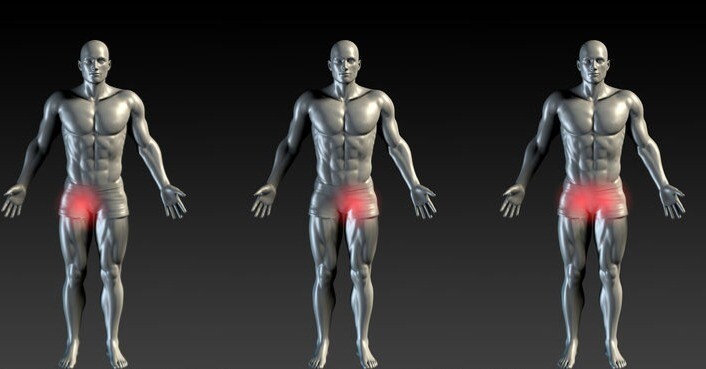Management of Athletic Pubalgia syndrome workshop learning material and achievement certificate
Course Tutors:
Dr Juan Di Leo Rizuk
Consultant musculoskeletal and sports physiotherapists.
Senior lecturer. Argentina
Clinical Instructor.Belgium
Clinical doctorate.USA
Consultant Physiotherapist. River plate Football club . Argentina
Dr.Mahmoud Saad
Chartered Physiotherapist UK
Academic Visitor. Sheffield Hallam University
Fellow higher education academy UK
Chairman of orthopaedic Manual Therapy
Outline:
There are enormous amount of information online regarding Athletic Pubalgia. So why take this course?
When it comes to clinical practice, we all go through the trial and error stage where we read and practice what we have learned on patients and observe the results , others , prefer the fast route.effective, option, where they listen to those who have both clinical, research and academic experience.In this course you will have the opportunity to engage with clinical and research evidence in relation to Athletic Pubalgia syndrome.
How can i enrol to this course:
here we go:
Listen to the live session at Primephysiouk Facebook page
Read the introductory learning materials below.
Additional advanced learning materials based on research evidence with step by step clinical rehabilitation guidance with hand picked youtube videos could be downloaded once you make the payment here.
Answer the MCQ test Click here
If you would like to receive additional reading materials and achievement certificate you can pay through this link
Introduction:
Athletic Pubalgia an injury to the soft tissues of the groin and inner abdominal wall that does not form a visible bulge and fails to heal with rest and other traditional recovery methods. It is currently one of the least-understood sports injuries.
It plagues mostly athletes and high-level recreational and fitness enthusiasts, but can affect weekend warriors as well. The pain is often bad enough to stop all activity. In the case of competitive athletes, it can often be career-ending.
From a medical standpoint, the debilitation is relatively new, with first mention of the injury making its way into science publications in the 1980s. Luckily, however, the injury is now much more understood; with this increased knowledge has come more effective treatment methods that provide long-term pain relief.The injury goes by several different names which will be referred to throughout this article. While all of these names describe the same thing, medical researchers and specialists prefer the term Athletic Pubalgia because it doesn’t have mention of the word ‘hernia’—which is often mistaken for a traditional hernia.
- Athletic Pugalgia (AP)
- Posterior Inguinal Wall Deficiency or Disruption
- Gilmore’s Groin
- Slap Shot Gut
- Groin Hernia
- Footballer’s Groin
- Hockey groin syndrome
- Pubic Inguinal Pain Syndrome
- Core Muscle Injury
- Sportsman’s Groin
- Invisible Hernia
It is very important to point out the injury differs from a normal inguinal hernia which is much more common and produces a visible bugle that can be seen and felt. In this case, the abdominal lining (peritoneum) becomes weak and allows a “sac” to form through the membranous qualities of the abdominal wall and intestines. The sac then pushes through the weakest section in the wall to produce a lump that can be seen.
An indirect hernia presents a slightly different situation. In this case, the inguinal ring becomes too large, allowing abdominal contents to enter the inguinal canal. These may be too small to feel and essentially invisible, but are still “real” hernias and fall into the category above.
In contrast, a core muscle injury occurs when the soft tissues of the abdomen and groin become structurally unstable and weak in comparison to stronger muscles of the inner thigh. This can result in tears to the soft tissues of the pelvic and inguinal floors (tendons, ligaments, and muscles) as well as external oblique muscles. Additionally, most patients will have tears and weaknesses in the fascia of the external obliques.
Interestingly, increasing research supports the conclusion that AP, persistent adductor pain, and hip issues are all related and linked—when dysfunction in one area is present, it is likely in the others as well. As athletes begin to lose range of motion in the hips, large forces are distributed unevenly against the weakened inner abdominal muscles that connect deep in the groin.
As this happens, the powerful quad and adductor muscles of the leg become too strong to be supported by the weaker surrounding tissues. Ultimately, tears result as a cause of this extreme muscular imbalance.
Given this relationship and gradual process, pain and symptoms are rarely caused by an acute injury alone. In most cases, muscular deficiencies and weaknesses develop over time until eventually the wrong twist or turn is enough to cause a tear or strain.
Ultimately, the strong linkage between hip and groin injuries suggests that the full-core rehab approach found to be effective in treating a sports hernia may also be appropriate for a range of other hip and groin problems.
While both males and females can get the injury, males make up 96% of all forms of groin hernias; furthermore, males are responsible for 85%-97% of all AP referrals.
This is likely because the deep inguinal ring creates an opening in the deep abdominal wall (fascia trasnversalis) to allow for passage of the spermatic cord and must remain open for passage of blood and nutrients to the scrotum. If formation of this opening is larger than required, it can help to set the stage for injury later in life.
With that said, AP is still the most common form of groin hernia for women—and the amount of positive diagnoses for women are on the rise.
The lack of protrusion associated with the injury makes it especially hard to diagnose—especially for general physicians who are not trained and knowledgeable in the acute details of the injury.

